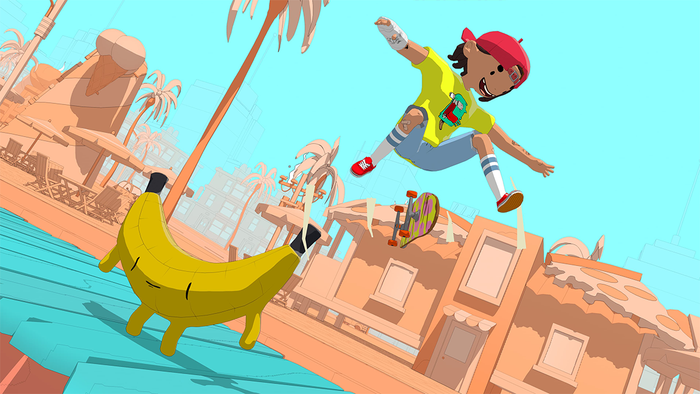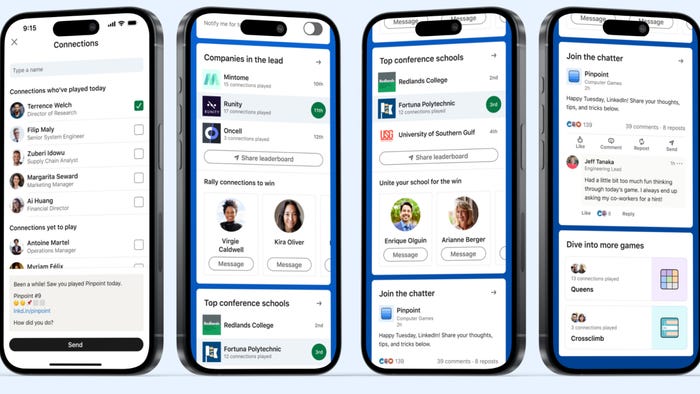
Featured Blog | This community-written post highlights the best of what the game industry has to offer. Read more like it on the Game Developer Blogs.
Nexon's "Oz: Broken Kingdom" Appropriately Named
Western monetisation expert Ramin Shokrizade shows in detail how an extremely high quality Western-localized F2P game can be broken by aggressive Eastern monetisation techniques.

I have been testing Nexon's new Oz: Broken Kingdom mobile F2P game and really enjoying it. It is the first offering from Nexon that I can honestly say I have enjoyed playing since their 2001 Shattered Galaxy MMORTS which I contributed to for two years as their quantitative QA/balance guy. I had started to write an article highlighting this product to show how some subtle, fast, and inexpensive design changes could double or triple the gross revenue generation of OZ.
Yesterday, before I could finish the article, someone at Nexon got impatient and took a sledgehammer to the game, effectively wrecking it. Yesterday I was also discussing with Mantin Lu why Eastern games often fail when brought to the West. So now this article is going to be a detailed forensic analysis of how an amazing Western localized F2P game (made in Canada) can be wrecked in no time by heavy handed intervention by Eastern monetisation influencers.
First off, let me say I am very impressed by the work of the developer, ThisGameStudio, based in Vancouver, Canada. The production quality and visual presentation of this game is quite possibly the best of any mobile game I have played, and I test well over 200 mobile games a year. The design is basically a simplified version of the gameplay from games such as Star Wars: Galaxy of Heroes, the main difference being that in Oz you control only one character in battle, not five as in Galaxy. This simplification makes it more accessible to children and casual adults.
The progression and reward systems are almost identical to the ones used in Supercell's Clash Royale. So similar that it looks like they used the exact same Excel spreadsheet but changed the names of the cards to fit the new IP. So while there is nothing innovative about these two borrowed systems, it was a bit innovative to combine them the way that they did, and presumably this made the project relatively low risk as the parts were previously proven successful by other developers.
The use of the Wizard of Oz IP is a fresh angle in mobile gaming, and going through the story in the single player mode was enjoyable for me. The more than 100 year old story gets a jazzed up racier reboot in the game, presumably to make it more hip in the eyes of today's gamers. I assume players will have mixed feelings about this. Players can go through the story using their choice of Tin Man, Lion, Scarecrow, or the new female protagonist Ophelia.
Where this gets weird is the addition of a pvp mode (like in Galaxy), presumably to fuel competitive pay to win purchases (like in Galaxy). In Galaxy this makes some sense as there are dozens of avatars you can combine into thousands of combinations, creating battles often between light side and dark side teams. In Oz you only have four avatar options, all of them "good guys". Why would they be fighting? No attempt to explain this is ever offered in the game. The single player PvE game ramps up in difficulty extremely fast, acting as a continual paywall. By the time you reach the sixth area, Glinda's Castle, the recommended power minimum for avatars brought to battle goes up about 40 per battle. At level 25, my avatars go up in power about 40 when I level up. So leveling up should allow me to advance one battle. If I level up once a day (difficult to do at this level) I will be able to advance one battle on the map in one day. There are 24 battles in this chapter. There are five more chapters. If the player does not have Herculean patience, they are going to have to pay or quit.
So the choice to frustrate players in the story mode (a form of threat generation) to drive monetisation leads to the need for the odd addition of the arena. Without the arena, the map looks very much like the map for Candy Crush Saga. But CCS has a lot more content, and King.com brags that most of the players that finish manage to do it without spending money. That's not going to be an option in Oz due to the way the game ramps up mathematically in difficulty. No amount of skill is going to make advancement possible.
To understand why some of these design choices were made, it is helpful to understand what is going on in the relationship between the developer and the publisher. Large Eastern publishers are increasingly partnering with Western developers to bring high quality mobile games to market in the West. Often these developers are given a great deal of autonomy but the publisher is ready to step in if some aspect of development is proving difficult. Typically monetisation is the area most likely to be difficult for Western developers because they have very little experience creating F2P business models for mobile games, and certainly less than their Eastern counterparts.
So if the publisher in this case says that to have strong pay to win revenue generation(a staple of all Nexon games going back 15 years) an arena is needed, that design choice is going to be pushed on the developer unless they can come up with a better alternative, which they likely cannot. By using the monetisation model used in Clash Royale (a weak but at least "made for the West" design) for the arena, they were assured of at least okay revenue generation.
So the game releases and revenue generation is a bit soft the first week despite strong promotion on the app store and a lot of installs. This is normal since Western whales (very different from Eastern whales) are a bit slow to commit to a game before opening their purse. As described in my Whales Do Not Swim in the Desert paper, Western whales take 18 days on average before making their first spend. In Eastern competitive pay to win games, usually someone buys the server well before day 18 and competition ends, necessitating the addition of new servers. Adding three servers a week is fairly normal for successful Eastern pay to win games. A good example would be Ark of War where I was the top player on server 125 until someone bought the server and ended competition (and server-wide spending) on day 8.
So when the business intelligence metrics come out for Oz the first week and there is no initial spending spike like there would be in an Eastern (short lived) pay to win game, I would imagine this might cause some concern on the part of the Eastern publisher. Even though the metrics might be completely healthy in the West, they will look alarming compared to Eastern numbers because game designs and user behavior are quite different between these regions.
So on September 20th, only five days after Apple app store launch, radical action was taken. A series of enormously overpowered package sales were offered, with one being offered for only 24 hours at a price of $99. Buying all three packages for an avatar costs a total of around $227 plus tax. Prior to this time I was dominating the arena. I spent about $25, used a bit under half of the resources I bought, and played essentially around the clock. I had better than a 95% win rate and a trophy total of about 1600 (League 4). Because I was one of the top ranked players, the matchmaker had a hard time finding opponents for me, especially at night.
Then I ran into a player with 900 trophies that had over 3000 power rating (mine is 2300) that just one shotted me with arcane nova, a spell so rare that I think it can only be purchased. I have never seen it drop in the game and it cannot be earned on the map in the first six chapters. I bought one copy of it for $3 to play with it. My opponent had L7 arcane nova, which requires 63 copies of the card (same system as in Clash Royale). Most players have under 1400 health at this point in the game, and loaded with big health gems I weigh in with 1800. You can see from the screen shot that one tap of arcane nova at L7 does 1325 damage. It is a one tap auto win. It also has a really cool and slow animation so that both sides know the ultimate power in the game is being activated.
So is this a bad thing? A detailed analysis is beneficial. I am a Western whale. I am the target audience for this product. I'm looking for a high quality game that will keep my interest for more than 18 days to invest in. On day 5 I see the server (and it appears that there is only one server) being bought pretty cheap ($227 is very cheap by pay to win standards). Now despite my hard work, a player with no time invested and no skill can defeat me with their eyes closed 100% of the time by hitting two keys. This is not the experience I am looking for, or looking to invest in. I will cut my losses at $25.
Even for those that paid to win, they are not going to see the value they wanted. The arena will award them lots of trophies and push them into higher leagues where they will only be fighting other players that have also paid to win. They will likely be carbon copies of each other. So in a few days they are no longer automatically winning, and in fact their chances of winning are no better than they were before.
When I play with these people in the arena, my trophies drop, which removes incentive for me to use the arena at all. If I do use the arena, my trophies will drop and the matchmaker will start pitting me against new players who will have no chance and will be discouraged from playing the game. So all three groups (newbies, Western whales, and wallet warriors) are going to quickly have an unpleasant experience of the game.
In the East the normal reaction is to just jump onto the next server and hope someone does not outspend you, or that you make friends with the biggest spender. But Oz was not designed like this. There is just one server. If the server tanks, then there is no escape from a poor gameplay environment. The community will rapidly condemn the product and, despite the beauty and quality of the product, player adoption and conversion will be limited. Nexon will see the spending spike they are looking for this week, but will have an increasingly difficult time reproducing it and sales will trend down instead of up.
It would be hard to fault the developer here, I doubt they had much control over what happened on September 20th, and less than total control prior to that. The publisher can be faulted, but not understanding Western gamer consumer behavior is normal for Eastern companies, as Mantin Lu's excellent blog this week discussed.
Read more about:
Featured BlogsAbout the Author(s)
You May Also Like







